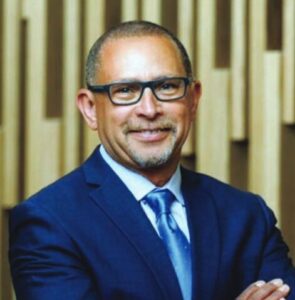Press release posted 6 February 2025
by Carla Robinson with Chestnut Hill Local
The Chestnut Hill Conservancy has named Bill Webster, SEPTA’s Chief Communications Officer, as the new president of its board of directors, the organization announced today.
Webster succeeds Eileen Javers, who led the organization for eight years and will remain on the board and executive committee. The appointment comes as the conservancy works to balance historic preservation with environmental conservation in Philadelphia’s Chestnut Hill neighborhood.
“Chestnut Hill is unique in that it’s a walkable, engaging neighborhood where people genuinely connect,” said Webster, who moved to the area in 2018 with his partner, Jeff Dugan. “The key is ensuring that people understand their role in shaping what happens next.”
In his role at SEPTA, Webster oversees public engagement for one of the nation’s largest transit systems. He previously helped secure State and National Historic District designations while working with the Montrose Park Historic District Association in New Jersey.
Webster emphasized that the Conservancy isn’t opposed to development but advocates for growth that preserves the neighborhood’s character. “What we advocate for is responsible development – that respects the character of Chestnut Hill and ensures that what makes this community special isn’t lost in the process,” he said.
Among Webster’s priorities is expanding educational programs about preservation tools and local decision-making processes, including zoning laws and variances. He aims to help residents better understand and engage with development issues affecting their community.
“Many people care deeply about preservation and conservation, but they don’t always understand the mechanisms that shape what happens in their neighborhood,” Webster said. “An informed community is a more empowered community – one that knows when and how to engage to affect a meaningful impact.”
The appointment comes as the conservancy works with new Executive Director David Gest to protect the built and natural environment of the Wissahickon watershed. Webster noted that balancing historic preservation with environmental sustainability presents both challenges and opportunities.
“We don’t prioritize one over the other,” he said. “Instead, our goal is to strike a thoughtful balance, ensuring that our built and natural environments remain protected for future generations.”
Growing up near Washington, D.C., Webster witnessed the impacts of urban renewal firsthand, seeing communities either erased or strengthened through preservation efforts. This experience shaped his commitment to community-driven preservation.
“I saw the stark contrast between areas like Southwest Washington, where everything was torn down in the name of progress, and neighborhoods like Capitol Hill and Georgetown, where engaged residents came together to protect their architectural and cultural heritage,” Webster said.
